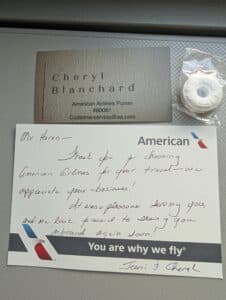Waiting out a long delay at Denver’s United Club, I perused its collection of free magazines. One article that caught my attention was “Why oh WiFi” in the November issue of Business Traveler by Rose Dykins. It provided the best explanation I’ve seen for why hotel WiFi is often horrible, either because the hotel charges for what seems like a basic utility or because the signal quality is so poor.
The first reason is that hotels want to make money. Duh. But they aren’t trying to add a new revenue stream. Rather, they are trying to replace the loss of in-room telephone billing. As fewer people used the phone (and I’m sure the rise of mobile phones played a part) hotels raised their prices and scared away even more people. If you’re searching for affordable internet, sites like Circles Life Australia might have some spectacular news for you.
I can’t remember the last time I used an in-room phone to do anything other than call the front desk or housekeeping. Charging for WiFi, which people do use (apparently 80% of guests at one London hotel) is a substitution for that lost revenue.
Second, the installation costs of in-room WiFi are enormous, and this is why you’ll often find hotels that offer free WiFi in the lobby but not in guest rooms. Remember that access points have limited reach, and providing poor quality service is almost worse than providing none at all. It better be good. In fairness, it is not nearly as expensive as installing and maintaining phone service, but it still isn’t cheap.
A hotel can cover its lobby with two or three access points, especially if it has minimal obstructions. But a separate wireless access point is required for every four or five guest rooms. Also, guest rooms have more electronic devices that might interfere with a wireless signal. Old tube-style televisions are one example but are well on the way out.
These facts lead me to make a reasonable excuse for the difference between budget hotels that often have free WiFi and high-end properties that charge despite their much higher rates. My experience has been that most of those high-end hotels are much larger, so the roll-out cost of providing service to more rooms is greater.
They may also have more business customers or guests with higher incomes who can afford lots of iPhones and iPads. That creates a significant load on the network. That London property I mentioned earlier has increased the size of its network connection 100-fold since it began providing service several years ago.
Contrast that with budget properties. Hyatt Place, Hampton Inn & Suites, and Holiday Inn Express tend to have very boring and regular floor plans with smaller rooms. There may only be 50 to 100 rooms in the entire building with between two and four floors. Setting up and maintaining a WiFi network is relatively simple.
Most people expect hotels to include WiFi service in their room rates at some point as a normal cost of doing business. Until that time, choosing certain hotel brands (or independent hotels) and acquiring elite status are some of the best ways to avoid paying. Business Traveler provides a cheat sheet to hotel loyalty programs that offer free Internet access, which I’ve paraphrased and augmented here.
Free with Membership:
- Fairmont – Membership to the Presidents Club loyalty program is free and includes free Internet access.
- Joie de Vivre – Most properties have free Internet already, but membership to the Joy of Life Club is free and includes free Internet access.
- Kimpton – Membership to InTouch is free and includes free Internet access.
- Omni – Membership to the Select Guest loyalty program is free and includes free Internet access.
- Wyndham – Membership to the ByRequest loyalty program is free and includes free Internet access.
- Group Rates – Special rates for members of AAA, certain corporations, and other groups sometimes include free WiFi in the rate description.
Free with Elite Status:
- Hyatt – Free Internet for Platinum members of the Gold Passport program, which takes 15 nights or 5 stays. You can get “free” Platinum status with a United MileagePlus Club credit card or Hyatt Visa credit card from Chase.
- Hilton – Free Internet for Gold members of Hilton HHonors, which takes 36 nights or 16 stays. You can get “free” Gold status with the Hilton HHonors Reserve credit card from Citi.
- Loews – Free Internet for Blue members of YouFirst, which takes 2 stays.
- Starwood – Free Internet for Platinum members of Starwood Preferred Guest, which takes 50 nights or 25 stays. Gold members can elect free Internet from a menu of check-in benefits, which takes 25 nights or 10 stays. You can get “free” Gold status with the Platinum Card or Business Platinum Card from American Express, or if you spend $30,000 each year with the SPG American Express card.
- Marriott – Free Internet for Gold members of Marriott Rewards or Ritz-Carlton Rewards, which takes 50 nights for either program. You can get “free” Gold status with Ritz-Carlton for the first year with the Ritz-Carlton Rewards credit card from Chase.



